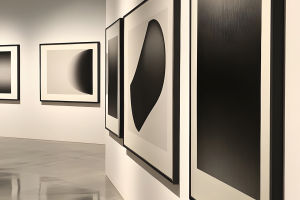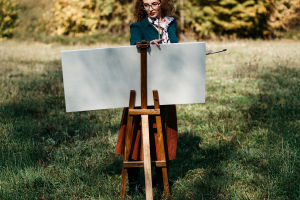Have you ever wondered why so many renowned creators throughout history have chosen to paint themselves? It's no accident.
The act of making a self-portrait is deeply personal—a powerful way to explore identity and reflect the universal human desire to be seen and understood.
Whether it's an exploration of identity, a form of self-expression, or a way to understand one's emotions, the reasons behind painting "oneself" are far-reaching and complex. Let's dive into this intriguing aspect of art and understand why self-portraits have been so important to artists throughout history.
The Search for Identity
At the core of every self-portrait lies a deep exploration of self. For artists, creating a representation of themselves is often a way to express who they are—or at least how they perceive themselves at a certain point in time. Identity is fluid, shaped by personal experiences, emotions, and the world around us.
Through a self-portrait, artists can capture and reflect on their own journey, both physically and mentally. It's a way of acknowledging their existence in the world and solidifying their sense of self.
For many artists, painting themselves is a tool for self-discovery. It allows them to reflect on their own growth, challenges, and transformations. By putting themselves into the canvas, they can examine their emotional states, facial expressions, and even their sense of vulnerability. It's an intimate conversation between the artist and their work, revealing truths that words alone may not be able to convey.
Control and Empowerment
Another reason why artists may be drawn to painting themselves is the control it gives them over the image they present to the world. In self-portraiture, the artist holds the power to dictate how they are seen, how they wish to be remembered, and how they feel about themselves. This can be especially important in times of emotional turmoil, social conflict, or personal transformation.
By painting themselves, artists can explore different aspects of their identity—whether it's their physical appearance, their mood, or their role in society. They have the ability to decide how they want to express themselves, free from the judgment of others. In this way, the self-portrait becomes an act of empowerment. It's not just about capturing an image; it's about reclaiming one's narrative and asserting one's own identity.
Exploring the Human Condition
Self-portraiture is also a way for artists to explore the broader human condition. When we look at a self-portrait, we are often seeing not just the artist themselves, but also a reflection of human emotions, struggles, and experiences that resonate with all of us. Self-portraits can convey a range of emotions—from joy and confidence to sadness and anxiety.
Through these images, artists share a universal human experience that transcends individual lives.
Consider the example of a creator who used self-portraiture to convey deep pain and resilience. Through these works, they revealed not only physical scars but also emotional and psychological wounds. By turning their personal struggles into visual stories, they invited others to connect and empathize with their journey.
For many, this act of exploring the human condition is central to why self-portraits are made—a way to forge a shared understanding through individual experience.
Historical and Artistic Tradition
The tradition of self-portraiture dates back centuries, and it's often seen as a rite of passage for many artists. Throughout history, painters have used self-portraits to establish their place in the art world and assert their skills. In the past, artists often had to create self-portraits to prove their technical abilities, especially when commissions were rare.
These paintings were seen as a means to showcase their talent, as well as to immortalize their own image.
Self-portraits have also served as a means for creators to examine their place in the world. In certain historical periods, such as the Renaissance, individuals used self-portrayal to demonstrate their intellect, skill, and status. These works weren't just introspective—they also reflected a desire to be seen within a broader cultural and intellectual landscape.
Conclusion: The Self-Portrait as a Mirror
In the end, the reason why so many artists choose to paint "themselves" is as varied as the artists themselves. Whether it's an exploration of identity, an act of empowerment, or a means of connecting with others, self-portraits allow artists to reflect on who they are, where they've been, and where they're going. They are a mirror that holds up not just the artist's image, but also their inner world—their emotions, thoughts, and experiences.
So, the next time you encounter a self-portrait, take a moment to reflect on the deeper meaning behind it. What is the artist trying to tell us? What part of their soul are they sharing with us? In these intimate creations, we often find the most profound reflections of humanity.
Now, let's hear from you! Have you ever tried creating a self-portrait, whether in art or in another form? What does it reveal about you?


